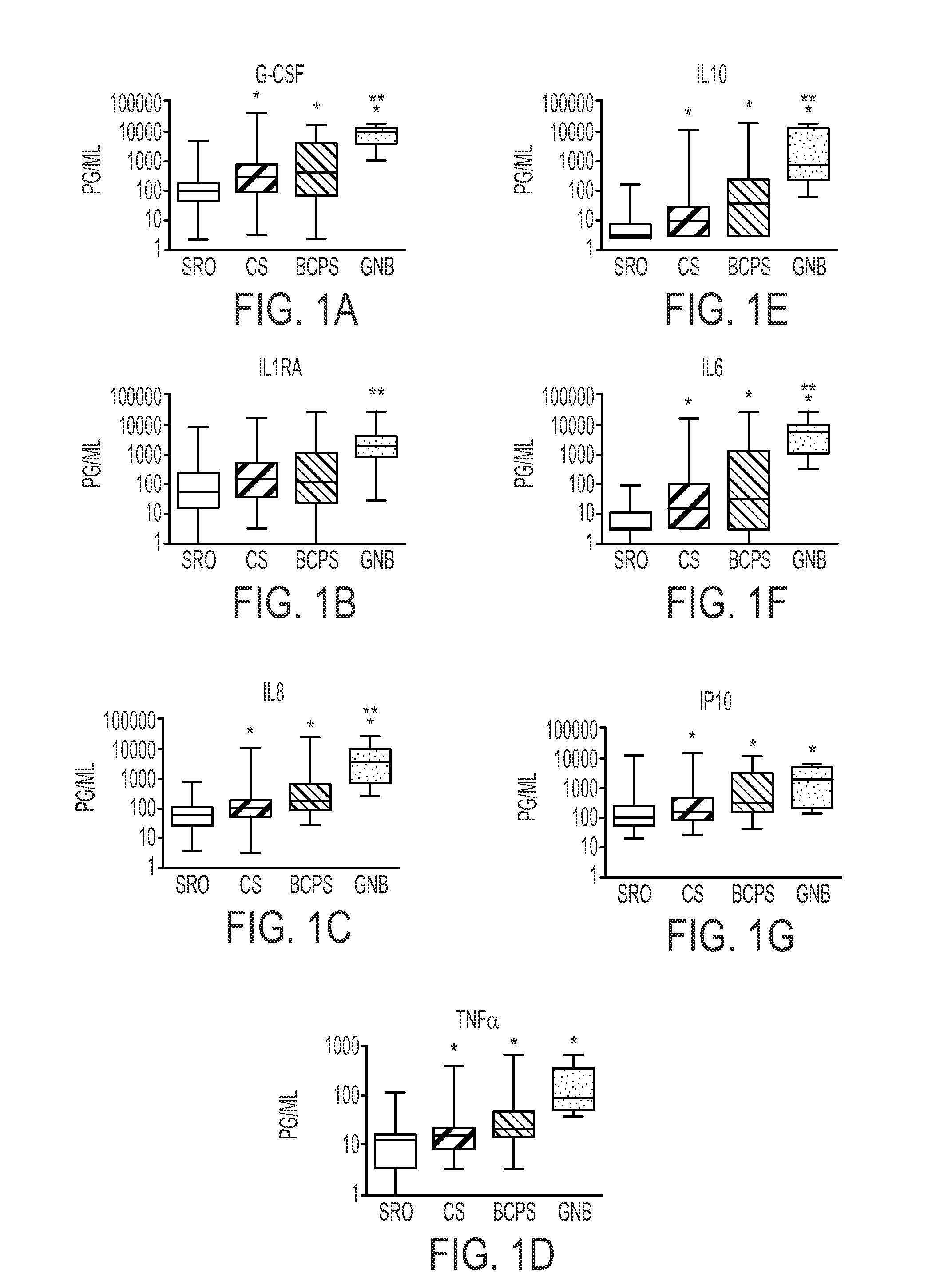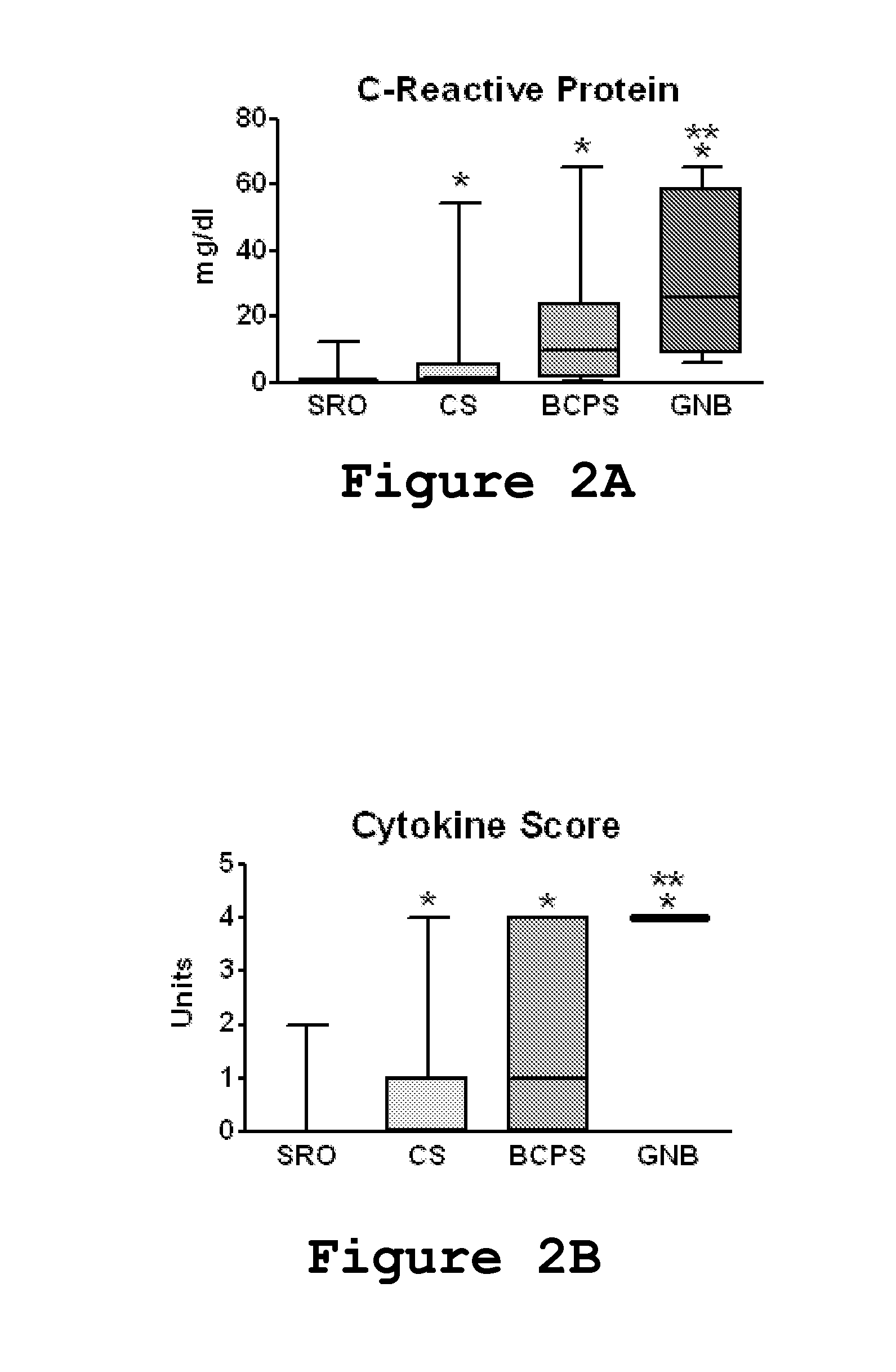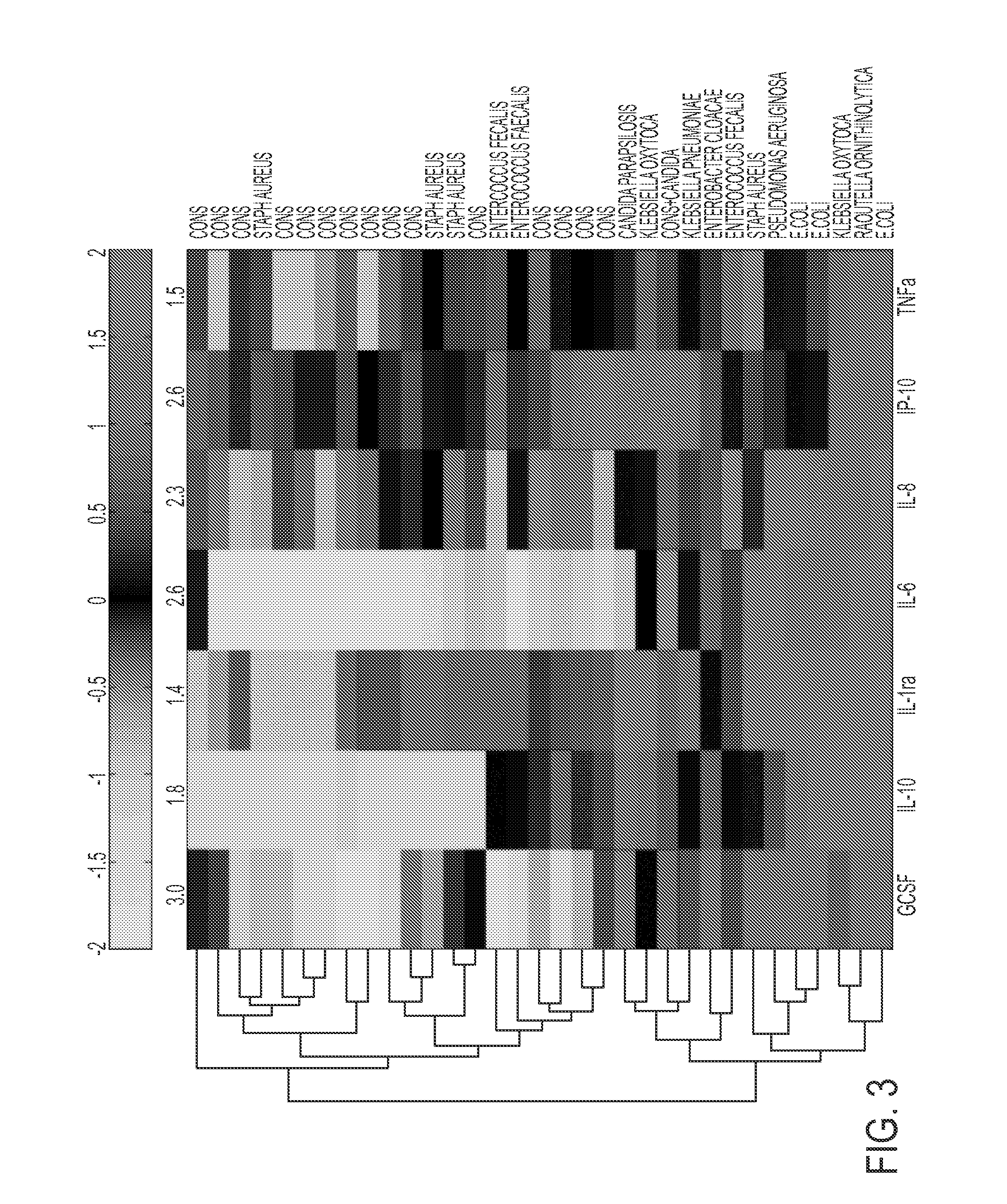System, method and computer program product for the organism-specific diagnosis of septicemia in infants
a technology for infants and organisms, applied in the field of infant septicemia, can solve the problems of increasing evidence of adverse effects of antibiotic overuse, and achieve the effects of reducing the risk of infection, rapid clearness, and combating the detrimental effects of cytokine overproduction
- Summary
- Abstract
- Description
- Claims
- Application Information
AI Technical Summary
Benefits of technology
Problems solved by technology
Method used
Image
Examples
examples
[0065]Practice of an aspect of an embodiment (or embodiments) of the invention will be still more fully understood from the following examples and experimental results, which are presented herein for illustration only and should not be construed as limiting the invention in any way.
Experimental Results and Examples Set No. 1
[0066]Remnant plasma was collected from NICU patients greater than 3 days old undergoing blood culture for suspected sepsis. Patients of all gestational ages were included. Samples were collected over an 18 month period at 2 centers (University of Virginia, “Center A”, and Wake Forest University, “Center B”). Birth weight, gestational age, duration of antibiotic therapy, and blood culture results were recorded. Samples were classified as sepsis ruled out (negative blood culture and antibiotics for <5 days), clinical sepsis (negative blood culture but antibiotics continued ≧5 days), blood culture-positive sepsis (a positive blood culture in a patient with signs an...
PUM
| Property | Measurement | Unit |
|---|---|---|
| time | aaaaa | aaaaa |
| birth weight | aaaaa | aaaaa |
| birth weight | aaaaa | aaaaa |
Abstract
Description
Claims
Application Information
 Login to View More
Login to View More - R&D
- Intellectual Property
- Life Sciences
- Materials
- Tech Scout
- Unparalleled Data Quality
- Higher Quality Content
- 60% Fewer Hallucinations
Browse by: Latest US Patents, China's latest patents, Technical Efficacy Thesaurus, Application Domain, Technology Topic, Popular Technical Reports.
© 2025 PatSnap. All rights reserved.Legal|Privacy policy|Modern Slavery Act Transparency Statement|Sitemap|About US| Contact US: help@patsnap.com



